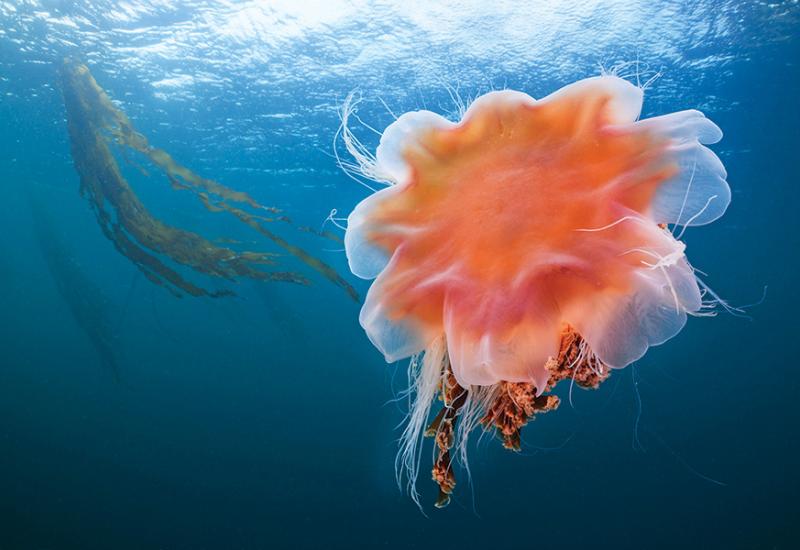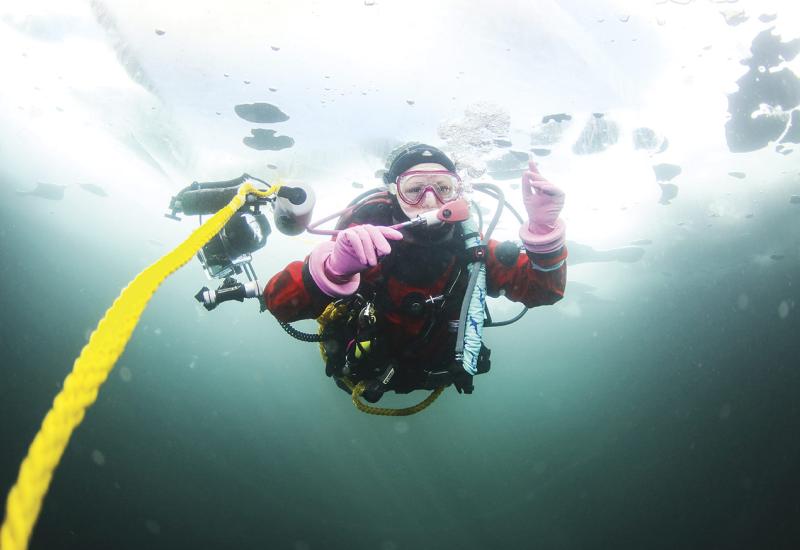What It's Like to Get Scuba Certified During The Coronavirus Pandemic

Alexandra GillespieAlexandra Gillespie, a digital editor at Scuba Diving magazine, explores what it's like to get an Advanced Open Water certification during COVID-19.
When diving at White Star Quarry, take a turn at the sunken sailboat to cruise through an enchanted forest stuffed with garden gnomes, loop through the algal Frito Lay truck, and stop by the motorcycle on your way back. If you’re doing a deep dive in the old crusher pit, keep your eyes peeled for the dog statue festooned in a sequin bow tie.
Marooned in a sea of corn, White Star Quarry is in Gibsonburg, Ohio. I can tell you from experience “Ohio” is not the answer most people expect when they ask where you got scuba certified. Mental images of sharks melt away in a haze of confusion: You can dive in the Midwest?
I’ve had the good fortune to earn two scuba certifications at this midwestern oasis, my Open Water in June 2019 and my Advanced Open water one year later—despite the coronavirus pandemic.
As COVID-19 cancelled everyone’s everything, I watched my 125-person July wedding implode and my Florida Keys honeymoon evaporate. Earning my PADI Advanced Open Water certification is the one plan that emerged from the pandemic’s tentacles largely unscathed. While coronavirus took a Drysuit Adventure Dive off the table—I couldn’t go into the store to try on suits for that glass-slipper fit—the time, date, location and goals never changed.
And, as I discovered, the dive community didn’t change either. In turbid 2020, that’s a miracle.
Comfort in Community

Alexandra GillespieWrecks, (short for Shipwrecks), greets divers at the White Star Quarry concession and tank fill stand.
Pulling into my happy port during this worldwide storm, pandemic accommodations immediately popped into view. Plastic trash bags cut off the water refill station, and a new sign hung by the scuba diving permit envelopes warned me not to lick them shut. Each dive shop occupied a different picnic table in a nod to the park’s “one household per table” rule. The sandy beach across the quarry, owned by the county, sat silent, still closed.
My anxiety flickered. White Star’s quirks are delightful, but what makes it truly special is that tight sense of community local dive holes develop. COVID’s a master at driving people apart.
The best diving is “not so much [about] where I'm at, but who I'm with,” said Rich Synowiec, owner of Divers Incorporated, a dive shop in Ann Arbor, Michigan, and operator of the White Star Quarry’s concession and tank fill stand.
“If you look at what my favorite dives have been—I got to do a dive at White Star one time with my kids, my wife and my mom and dad,” said the PADI Course Director.
Synowiec believes “what keeps people from diving is having a community to dive with,” so everything about Divers Inc. and White Star is designed to get divers together and in the water, from weekends of free gear rentals for Open Water students to the White Star Quarry Scuba Buddy Board Facebook group.
I shouldn’t have worried COVID-19 would steamroll White Star’s spark. The tight knit community blew the typical awkwardness of distancing out of the water. The 14-year-old Synowiec twins were there as usual to refill tanks and run the rental stand. Their dog, Wrecks, happily doled out kisses. Will Graham, my instructor, was the same diver who taught my confined water sessions last year. Laughter drifted from other shop’s tables even as group pictures were replaced with collages of individual photos to commemorate the day.
That’s not to say distancing is an effortless endeavor.

Alexandra GillespieDave Pawlowski, (left), an Advanced Open Water student, socially distances from PADI instructor Will Graham during the White Star Quarry site orientation.
Table designations aside, my instructor, classmates and I found keeping six feet apart difficult. Staying away from your dive buddy until you’re underwater isn’t normal, and it’s an extra challenge when training. Forming a large circle worked for our local orientation, but made explaining a compass exceedingly difficult in the lead-up to our Navigation Adventure Dive. Who can see those little notches from that distance? It can be overcome—my entire class passed the nav dive—but it’s far from a convenient way to learn.
The largest onshore challenge is kitting up without a buddy. The group did the best we could, propping tanks on tables and sitting in the shallows to don fins. But sometimes you just need somebody to zip up the back of your 7 mil.
Abnormally Normal
The first breath underwater is aquatic alchemy. Rising bubbles replace rising tensions. The steady hiss of regulators erases the incessant pings, rings and dings from manifold screens.
By the grace of Poseidon, social distancing isn’t necessary underwater. In that, the sub-aquatic world offers something right now divers aren’t usually searching for—a sense of normalcy. You can dive like you always would. What a freedom normal is!
And what a necessity.
An Advanced Open Water classmate got stuck during the Peak Performance Buoyancy Adventure Dive obstacle course. PVC diamonds and semi-circles float at various depths in the quarry, students swimming through them to practice buoyancy control. When finning through a semi-circle, his loose octo snagged a PVC prong. Panic immediately set in, his windmill arms only tugging his cord further down the pipe. Bubbles flew as he began burning through his tank.
Reaching him first, I gingerly lifted the hose off the hook, avoiding his flailing fins. He quickly swam off, satisfied with his freedom and air supply. We were separated again, each dutifully skimming the obstacle course.
But, for a moment, we’d come together—physically—to help each other out.
Divers helping divers. Coronavirus can’t cancel that.

Alexandra GillespieA diver swims through a PVC claw at White Star Quarry during a Peak Performance Buoyancy Adventure Dive.
Related:










